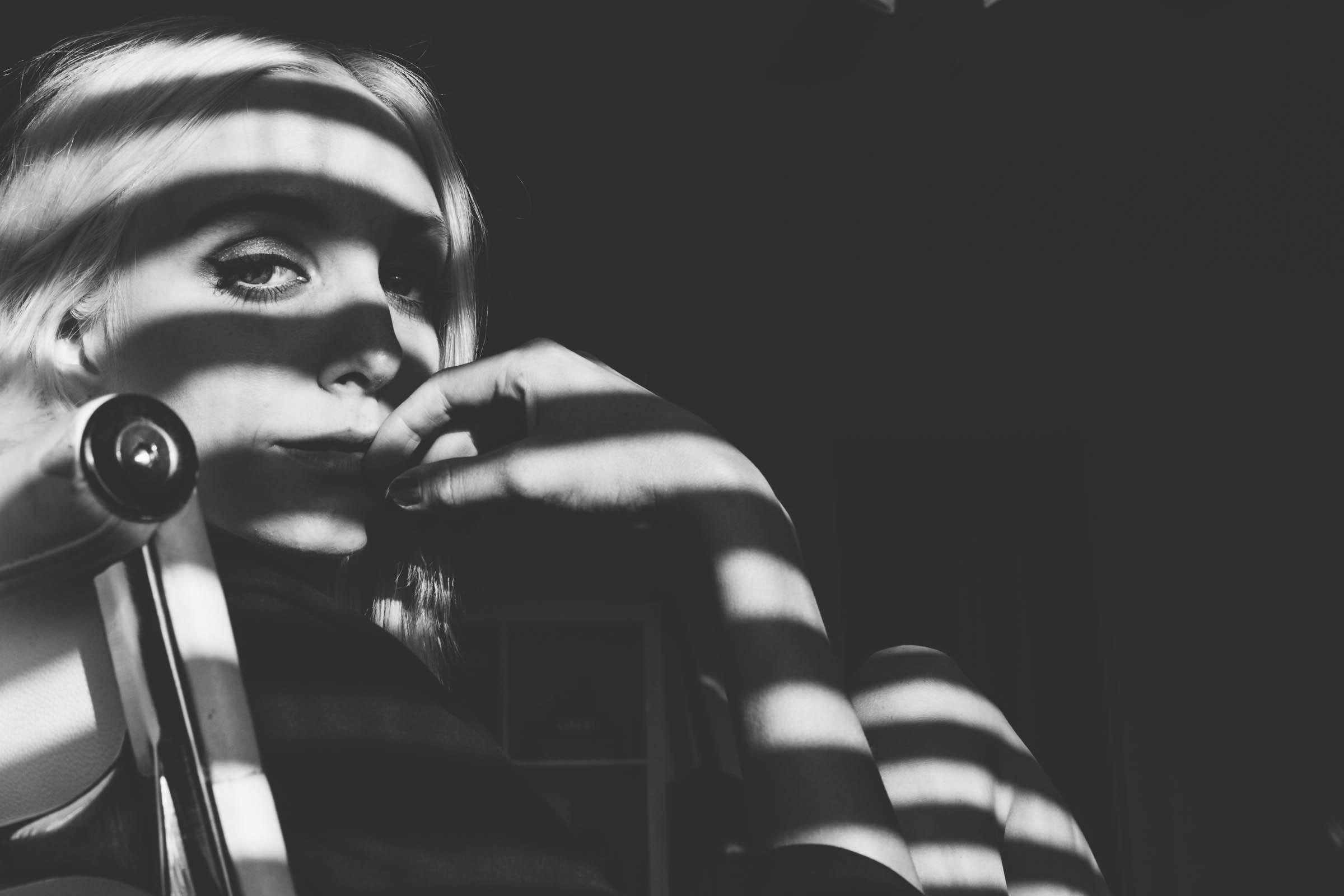Each person will post their own images and analysis.
Research film noir portraits. Choose one photograph to replicate. Use AT LEAST two grids or one grid and one snoot.
Spend some time editing your image in Lightroom (convert it to black and white and adjust the lighting using all of the global and local adjustments available to you in the develop module.)
Post a description of your setup (drawing/diagram even better) and discuss how the grids helped you achieve the lighting in your portrait.
While researching film noir portraits I came across many, but wanted to try and tackle the film noir portrait that included shadow blinds in the photo. I did my best to try and find a portrait that I felt I could replicate. In the photo above, it appears that light is coming from one source and it may even be natural light streaming through a window with shades.
To try and produce blinds shadows on the subject/scene, I figured I would need to build something. Below is my creation.
 | |
| Cardboard grid with black foil and tape. |
 |
f/3.5, 1/60, ISO 100 1600 Key light - 10' 100% 20 grid 1600 Fill light - 5' -5f quarter power |
 |
f/3.5, 1/60, ISO 100 1600 Key light - 10' 100% 20 grid 1600 Fill light - 5' -5f quarter power |
 |
Light set up. Key to left, fill to right. Holding grid and photographer shoots subject to the right of grid |











